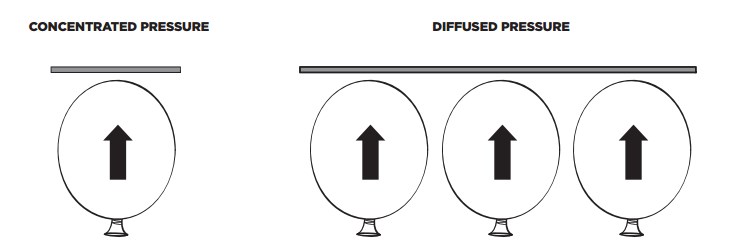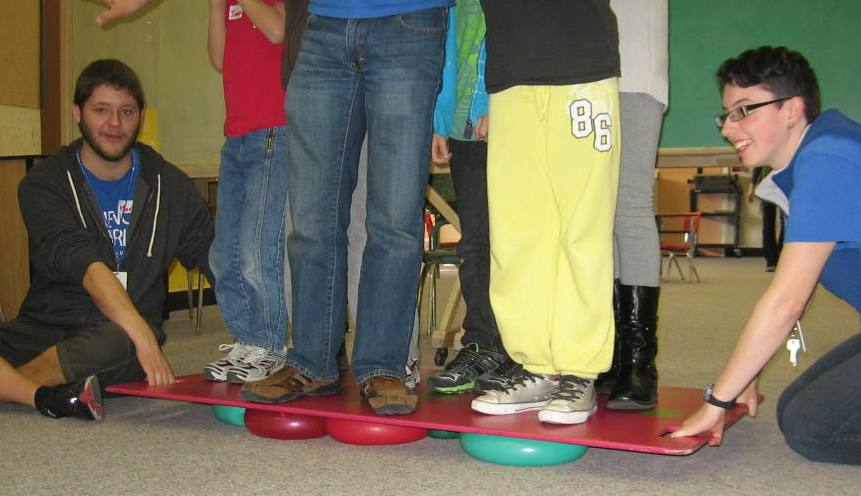When a person puts his whole weight on one balloon, all of the pressure from that person is concentrated on one small area of the balloon, which results in the balloon bursting. When the person's weight is distributed over several balloons, the balloons do not burst because the pressure is spread over a large area. As a result, each balloon only supports a small fraction of the weight.

This trick only works if the balloons are not fully inflated. If this demonstration is done with fully inflated balloons, the rubber is already stretched out and is less elastic. Balloons that are only partially blown up still have the ability to stretch.

This is a recommended post-visit activity for a field trip to Science World.
This demonstration is similar to asking a volunteer to lie on a Bed of Nails, a common exhibit found in science centres: Check out the Science World Edition HERE.
If the volunteer were to sit on one nail, it would be extremely painful. But if the weight is distributed over hundreds of nails, there is very little pressure on each individual nail, rendering the experience quite comfortable. The difficulty is when the person is in the process of lying down or getting up, since her weight is distributed on fewer nails, resulting in more pressure being exerted on each nail.



